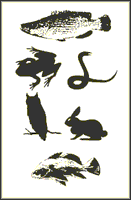Nebraska Cooperative Fish and Wildlife Research Unit

Nebraska Cooperative Fish and Wildlife Research Unit: Staff Publications
ORCID IDs
Mark A. Kaemingk https://orcid.org/0000-0001-9588-4563
Christopher J. Chizinski https://orcid.org/0000-0001-9294-2588
Aaron J. Bunch https://orcid.org/0000-0002-1855-5616
And Kevin L. Pope https://orcid.org/0000-0003-1876-1687
Date of this Version
2021
Citation
Ecological Applications, 31(2), 2021, e02272
Abstract
Natural resources such as waterbodies, public parks, and wildlife refuges attract people from varying distances on the landscape, creating “social-ecological catchments.” Catchments have provided great utility for understanding physical and social relationships within specific disciplines. Yet, catchments are rarely used across disciplines, such as its application to understand complex spatiotemporal dynamics between mobile human users and patchily distributed natural resources. We collected residence ZIP codes from 19,983 angler parties during 2014–2017 to construct seven angler–waterbody catchments in Nebraska, USA. We predicted that sizes of dense (10% utilization distribution) and dispersed (95% utilization distribution) angler–waterbody catchments would change across seasons and years as a function of diverse resource selection among mobile anglers. Contrary to expectations, we revealed that catchment size was invariant. We discuss how social (conservation actions) and ecological (low water quality, reduction in species diversity) conditions are expected to impact landscape patterns in resource use. We highlight how this simple concept and user-friendly technique can inform timely landscape-level conservation decisions within coupled social-ecological systems that are currently difficult to study and understand.
Included in
Aquaculture and Fisheries Commons, Environmental Indicators and Impact Assessment Commons, Environmental Monitoring Commons, Natural Resource Economics Commons, Natural Resources and Conservation Commons, Water Resource Management Commons


Comments
US gov't work